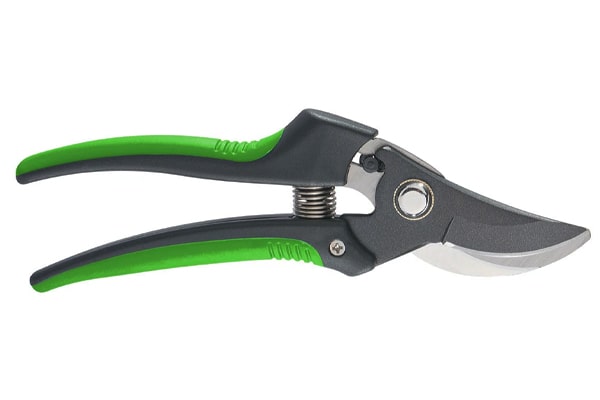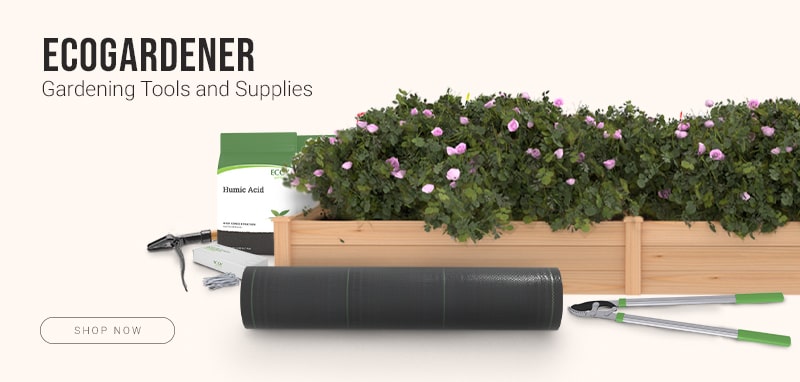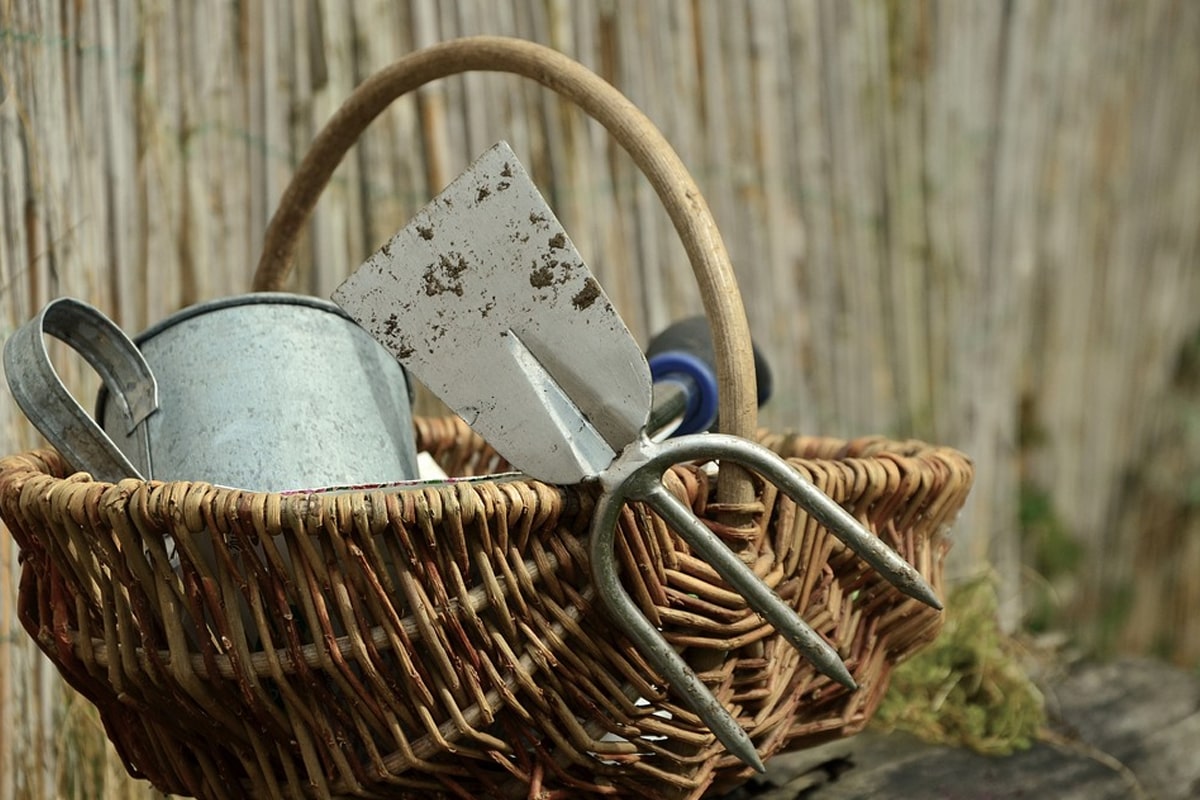What garden tools will you make full use of? What tools and supplies can you go without in your garden?
Every gardener wants a shed filled with a complete set of garden tools. In fact, gardeners are preparing and storing their tools so they can use them again for the next seasons to come. There are also amazing ways that most gardeners do to repurpose their old garden tools.
But when you're new to gardening, it's hard to know what tools to get. Garden tools can be quite pricey, so it's important to buy only the ones you will maximize. In this guide, we've listed down essential gardening tools that you will use all the time:
Contents []
10 Must-Have Gardening Tools to Get Started
It’s easy to go overboard and do more in gardening. And to make a beautiful garden, go for these gardening tools and supplies that we recommend:
Garden Gloves

A gardening must-have, garden gloves protect the hands from injury ranging from splinters to cuts and wounds caused by gardening and yard work. You need a high-quality pair of garden gloves that’s:
- Water-resistant
- With long cuffs
- Breathable
- Durable
- With excellent grip
- Form fit
Avoid garden gloves that are too bulky because these could inhibit hand movements. Choose durable gloves that let the skin breathe. Long cuffs add protection to the wrists and forearms from splinters and scratches.
Pruning Shears

A good pair of pruning shears help maintain the look of the garden by controlling plant growth. Choose a pruning shear that’s sharp, easy to use, and easy to hold. The pruning shears should be sharp, so they won’t shred plant stems as you trim overgrowths. It should be easy to use to prevent accidents and easy to hold so you can prune away without straining your hands and arms.
As for the size of the pruning shears, it depends on the size you are comfortable using. If you have arthritis, for example, we suggest getting a ratcheting pruner. Anvil-style pruning shears are best for people with a stronger hand.
Lopper
A lopper is a cutting tool used to prune small branches. Unlike pruning shears, loppers have a long handle so you can cut twigs and small branches in hard-to-reach places. It’s also used to cut thick branches. The cutter itself is made with a carbon steel blade, while the handles, which could range from 16 to 36 inches in length, are made with a lightweight alloy like aluminum or carbon composite. When shopping for a lopper, go for a sharp one made with durable metal yet lightweight. Have it sharpened regularly so that pruning won’t hurt the arms and shoulders.
Garden Fork

A garden fork is used to work the soil. This tool has three to four points or spines that can dig into dense or compacted earth to break it and loosen the texture. You can use the garden fork to rid a plot of twigs, roots, and other unwanted debris. If you are into composting, the garden fork can be used to turn the compost pile, loosen compacted organic materials, or scoop the compost when it’s ready to use. This is a versatile gardening tool, especially if you live in a place with rocky, compacted, or clay soil.
Hand Trowel
A hand trowel is always a part of every gardener’s essential tool. It’s so versatile! Use it for transplanting bedding plants, small herbs, seedlings, etc., or to take out weeds. The broad blade lets you move more soil, while the pointed head enables you to dig through rocky or compacted soil. Hand trowels come in various sizes but choose one that fits comfortably in your hand. Also, be sure to get a high-quality trowel made from stainless steel because the material will last longer and won’t rust.
Spade
A spade is a short-handled shovel. It features a flattened, rectangular blade and is used for light cultivation. It's not used for working the soil but rather to dig holes, lift sod, even out the edging, and move small mounds of dirt from one area to another.
Garden spades come in different types, some with specialized purposes, but just go for the regular type if you're new to gardening because it's versatile enough to use for different gardening and yard work. Some have longer handles than others. Choose a spade that’s made with a thick, durable material with a solid handle. It should be comfortable to use and fits your hand.
Rake

Another essential tool that all gardeners cannot do without is a rake. A standard rake has a long handle with a toothed bar that’s set transversely. It's typically used to break down clods of dirt, move soil, and clear an area of unwanted debris like dry leaves, twigs, hay, etc.
Rakes come in various styles; some are made with steel points, others are made with plastic tines. Rakes with steel toothed bars are more durable and designed for tough jobs, while those with plastic tines are made for delicate lawns. Some rakes are shorter to fit narrow areas, while wider rakes are meant to gather large piles of debris.
Hoe
Perhaps one of the oldest garden tools to ever exist is the humble hoe. The hoe features a long handle with a steel paddle, blade, or stirrup at the end. This is a hand tool used to cultivate the soil, remove weeds, eliminate roots, and prepare the ground for planting. The paddle hoe is the basic garden hoe that clears a space of unwanted debris and shapes the soil.
A hoe with a wide blade is best for vegetable gardens because the tool is meant for tough plowing. A thinner, smaller hoe is best used for flower gardens because the plants require a more gentle touch. Go for a hoe with a long reach and a sharp blade.
Garden Hose (with Adjustable Nozzle)

Keeping your plants well-hydrated calls for a sturdy garden hose with an adjustable nozzle. A garden hose lets you cover more ground. The adjustable nozzle enables you to reach every corner of the garden, even hard-to-reach places.
Just to make sure you’re buying the right product, measure how far away the water source is from the garden. Note that hose length will affect the water pressure. The longer the hose is, the lower the water pressure. Choose a garden hose that’s flexible, durable, and resistant to sunlight exposure. Vinyl garden hose is lightweight and less expensive, but rubber garden hose is more durable and less likely to kink.
Watering Can

Rounding up our list of the 10 must-have gardening tools for newbie gardeners is the humble watering can. A watering can holds a gallon or so of water for watering plants indoors or outdoors and best for watering herbs. This product is often made in plastic or metal material. Metal cans are the most popular but are prone to rust, so choose one made from stainless steel. Stainless steel watering cans are more expensive, but they’ll last you years.
A big watering can with a large sprinkler head is best used outdoors for serious watering. A small watering can with a long neck is best used indoors for houseplants.
ECOgardener for Your Eco-Friendly Gardening Tools
And there you have it, the 10 must-have tools that every gardener - beginner and seasoned growers alike - cannot do without. Do your holiday shopping at our online store today! You can also check our favorite garden supplies that are best Christmas gifts to complete your list!
ECOgardener offers eco-friendly gardening products from recyclable and biodegradable materials. We want to ensure that you are giving the best care to your garden while promoting pesticide and chemical-free growing. Shop now and enjoy great savings on gardening essentials.




